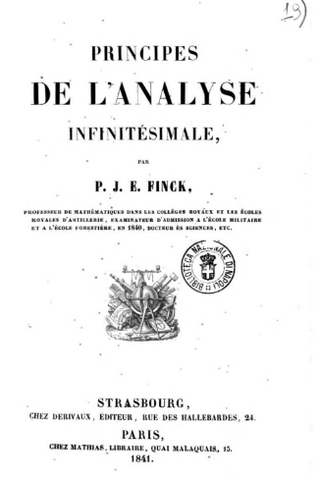
Algebraic geometry is a branch of mathematics which uses abstract algebraic techniques, mainly from commutative algebra, to solve geometrical problems. Classically, it studies zeros of multivariate polynomials; the modern approach generalizes this in a few different aspects.
Combinatorics is an area of mathematics primarily concerned with counting, both as a means and as an end to obtaining results, and certain properties of finite structures. It is closely related to many other areas of mathematics and has many applications ranging from logic to statistical physics and from evolutionary biology to computer science.
Mathematics is an area of knowledge that includes the topics of numbers, formulas and related structures, shapes and the spaces in which they are contained, and quantities and their changes. These topics are represented in modern mathematics with the major subdisciplines of number theory, algebra, geometry, and analysis, respectively. There is no general consensus among mathematicians about a common definition for their academic discipline.

Pappus of Alexandria was a Greek mathematician of Late Antiquity known for his Synagoge (Συναγωγή) or Collection, and for Pappus's hexagon theorem in projective geometry. Almost nothing is known about his life except for what can be found in his own writings, many of which are lost. Pappus apparently lived in Alexandria were he worked as a mathematics teacher to higher level students, such one named Hermodorus.
Jean-Robert Argand was a Genevan amateur mathematician. In 1806, while managing a bookstore in Paris, he published the idea of geometrical interpretation of complex numbers known as the Argand diagram and is known for the first rigorous proof of the Fundamental Theorem of Algebra.
Stephen Mack Stigler is the Ernest DeWitt Burton Distinguished Service Professor at the Department of Statistics of the University of Chicago. He has authored several books on the history of statistics; he is the son of the economist George Stigler.

In the design of experiments, optimal experimental designs are a class of experimental designs that are optimal with respect to some statistical criterion. The creation of this field of statistics has been credited to Danish statistician Kirstine Smith.
In mathematics, the mathematician Sophus Lie initiated lines of study involving integration of differential equations, transformation groups, and contact of spheres that have come to be called Lie theory. For instance, the latter subject is Lie sphere geometry. This article addresses his approach to transformation groups, which is one of the areas of mathematics, and was worked out by Wilhelm Killing and Élie Cartan.

In statistics, response surface methodology (RSM) explores the relationships between several explanatory variables and one or more response variables. RSM is an empirical model which employs the use of mathematical and statistical techniques to relate input variables, otherwise known as factors, to the response. RSM became very useful due to the fact that other methods available, such as the theoretical model, could be very cumbersome to use, time-consuming, inefficient, error-prone, and unreliable. The method was introduced by George E. P. Box and K. B. Wilson in 1951. The main idea of RSM is to use a sequence of designed experiments to obtain an optimal response. Box and Wilson suggest using a second-degree polynomial model to do this. They acknowledge that this model is only an approximation, but they use it because such a model is easy to estimate and apply, even when little is known about the process.
In statistical modeling, polynomial functions and rational functions are sometimes used as an empirical technique for curve fitting.
In statistics, polynomial regression is a form of regression analysis in which the relationship between the independent variable x and the dependent variable y is modeled as an nth degree polynomial in x. Polynomial regression fits a nonlinear relationship between the value of x and the corresponding conditional mean of y, denoted E(y |x). Although polynomial regression fits a nonlinear model to the data, as a statistical estimation problem it is linear, in the sense that the regression function E(y | x) is linear in the unknown parameters that are estimated from the data. For this reason, polynomial regression is considered to be a special case of multiple linear regression.
Harold Mortimer Edwards, Jr. was an American mathematician working in number theory, algebra, and the history and philosophy of mathematics.
The mathematical manuscripts of Karl Marx are a manuscript collection of Karl Marx's mathematical notes where he attempted to derive the foundations of infinitesimal calculus from first principles.
François-Joseph Servois was a French priest, military officer and mathematician. His most notable contribution came in his publication of Essai sur un nouveau mode d’exposition des principes du calcul différentiel in 1814, where he first introduced the mathematical terms for commutative and distributive.
Jean Prestet (1648–1690) was a French Oratorian priest and mathematician who contributed to the fields of combinatorics and number theory.

Isabella Grigoryevna Bashmakova was a Russian historian of mathematics. In 2001, she was a recipient of the Alexander Koyré́ Medal of the International Academy of the History of Science.

Pierre Joseph Étienne Finck (1797–1870) was a French mathematician.

The Annales de Mathématiques Pures et Appliquées, commonly known as the Annales de Gergonne, was a mathematical journal published in Nimes, France from 1810 to 1831 by Joseph Diez Gergonne. The annals were largely devoted to geometry, with additional articles on history, philosophy, and mathematics education showing interdisciplinarity.
Morihiko Saitō is a Japanese mathematician, specializing in algebraic analysis and algebraic geometry.







